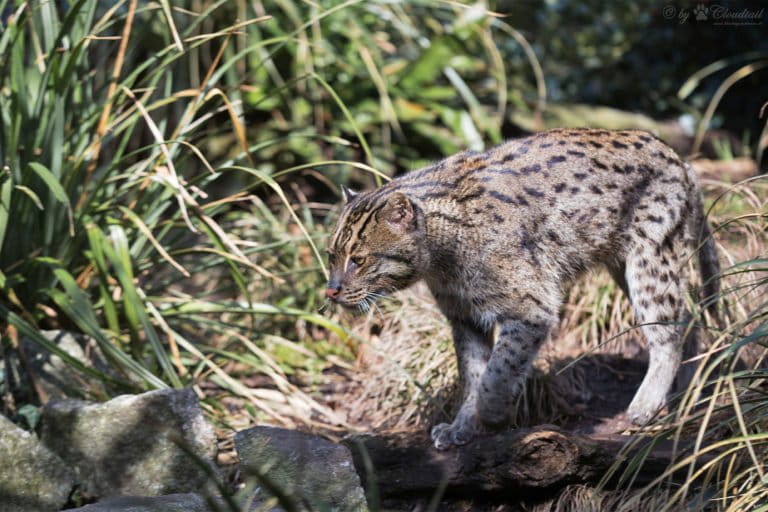- Three people known for their work with sloths, fishing cats and giant armadillos were announced this week as winners of the 2022 Future for Nature Award.
- Tiasa Adhya of India, Gabriel Massocato from Brazil, and Rebecca Cliffe in Costa Rica each earn a cash prize they will use to advance their work with these endangered animals and ecosystems.
- One will use the funding to acquire a dog specially trained to detect the presence of sloths, a cryptic species whose populations are challenging to estimate.
Three people known for their work with sloths, fishing cats and giant armadillos were announced this week as winners of the 2022 Future for Nature (FFN) Award, given annually to accomplished conservationists 35 years of age or younger.
According to a statement from FFN, each of these winners chosen from a pool of 250+ candidates will receive a 50,000 euro cash prize to aid their work with wildlife:

- Tiasa Adhya is an Indian conservationist working to safeguard the fishing cat and its wetland habitat. She brings people together in a strong network to help secure the future of the animals and humans dependent on this ecosystem.
- Gabriel Massocato is a Brazilian biologist who has dedicated himself to protecting a species that was quietly slipping toward extinction: the giant armadillo. He is also training others to help conserve these ecosystem engineers.
- Rebecca Cliffe is a British conservationist working to protect sloths and their tropical forest habitat in Costa Rica. She moved across the world to work with local communities to understand more about these elusive and charismatic creatures.
“When I grew up in the north of England, I had no idea what a sloth was. So this is sort of overwhelming,” Cliffe said of the award in an interview with Mongabay.
“She masters all facets of the project, from ecological research on population genetics to exploiting social media for outreach and fundraising,” the director of FFN, Dr. Rascha Nuijten, told Mongabay of Cliffe by email. “By making the Sloth Conservation Foundation such a success in such a short time, Rebecca showed incredible planning, innovation, endurance and commitment to her objectives of understanding the biology, threats, conservation needs and socio-political environment of sloths.”
Asked about her impressions of all the finalists, Nuijten said, “Overall this years’ finalists are of a very high standard. All three of them have shown they are dedicated and have an impact. They will go far to reach their objectives, and don’t shy away from thinking out-of-the-box to find solutions to the obstacles they face on their way. This is what all our Future For Nature winners have in common,” Dr. Nuijten stated.
That innovation is evident in Cliffe’s work that creates safe zones in Costa Rica to provide reintroduction areas for sloths and other species, and a network of simple canopy bridges to help arboreal animals like sloths and monkeys cross above the rapidly developing network of roads cutting into the forests of eastern Costa Rica, where her organization is based.
In a new move in that same innovative vein, Cliffe plans to use her FFN prize money to acquire a sloth detection dog from an organization like Working Dogs for Conservation, to boost the knowledge of these notoriously hard-to-census species. Slow moving and cryptic among the treetops, sloth population counts are often considered to be only somewhat accurate.

However, sloths do leave their trees to defecate on the ground, and a dog can be trained to sniff out that rare scat. Perhaps the most cryptic of these species – Brazil’s maned sloth – will be an early beneficiary of this new conservation solution, probably the world’s first detection dog trained to find sloths. A few times each year, the dog will be taken from its home with Cliffe in Costa Rica – where its sensitive nose will be used to identify and count the sloth species native to that country – to find and catalog maned sloths which live in Brazil’s Atlantic Forest.
“It’s going to allow us to see how many sloths are living in different regions and how that is changing over time,” said Cliffe. “And that really gives you a way of knowing the true conservation status of the species, and also being able to measure the impact of conservation efforts as well, like are our canopy bridges even helping?”
2022 marks the 15th anniversary of the FFN Awards. To celebrate this milestone, all award laureates have been invited to the Netherlands for a week of workshops, seminars and networking opportunities, toward developing themselves and their projects. The week will culminate with the FFN Award event, where the latest winners will receive their prizes.
Erik Hoffner is an editor for Mongabay, find him on Twitter via @erikhoffner.
Related listening from Mongabay’s podcast: Conservation solutions like bioacoustics are opening up new avenues for wildlife research in Africa, listen here:
